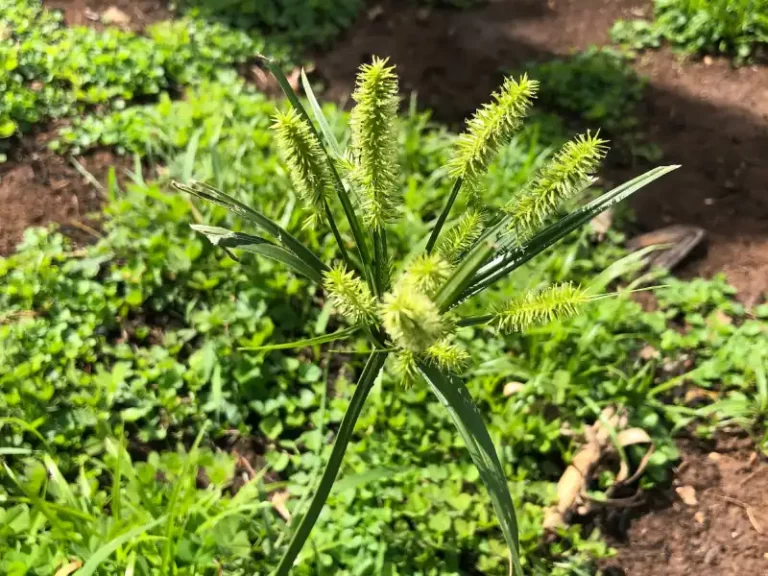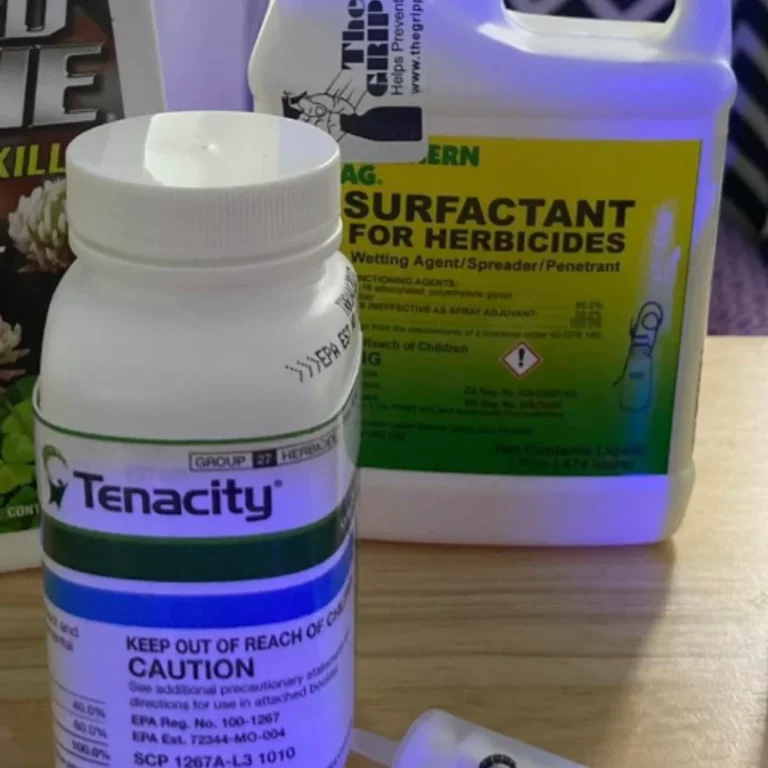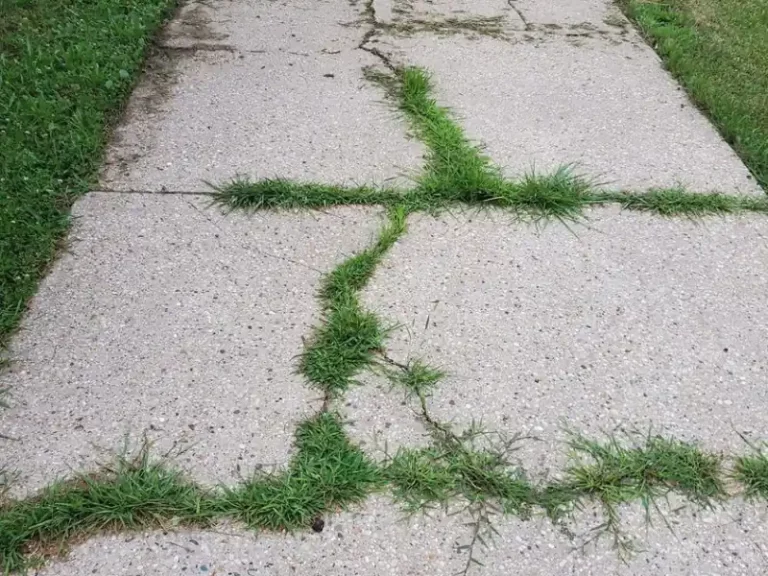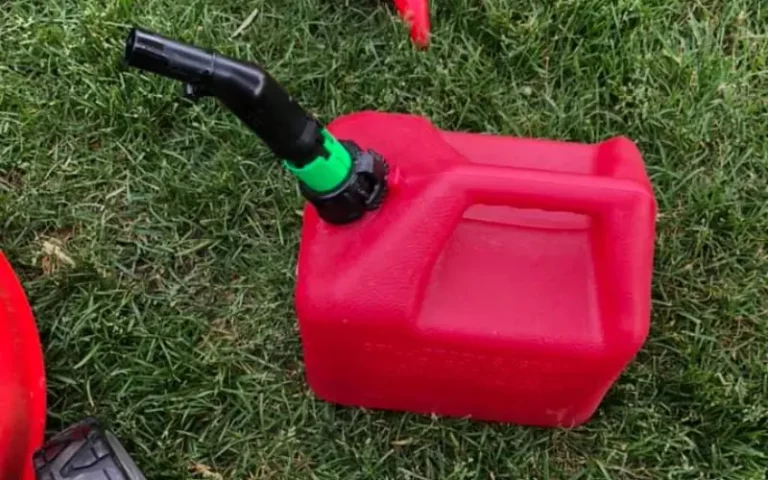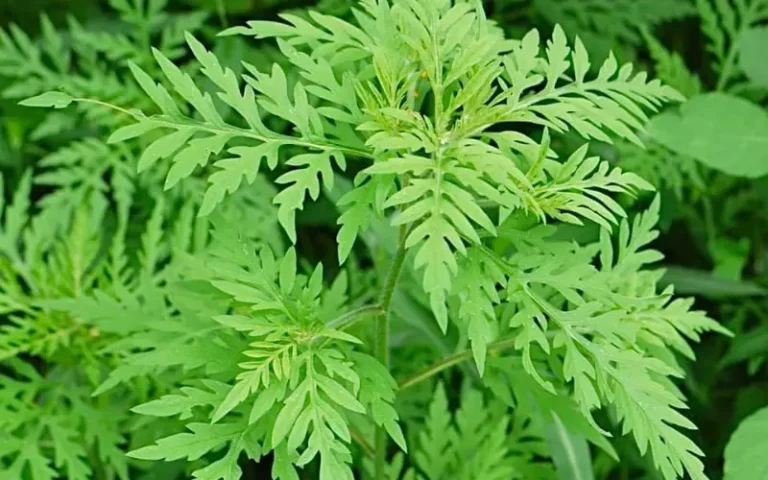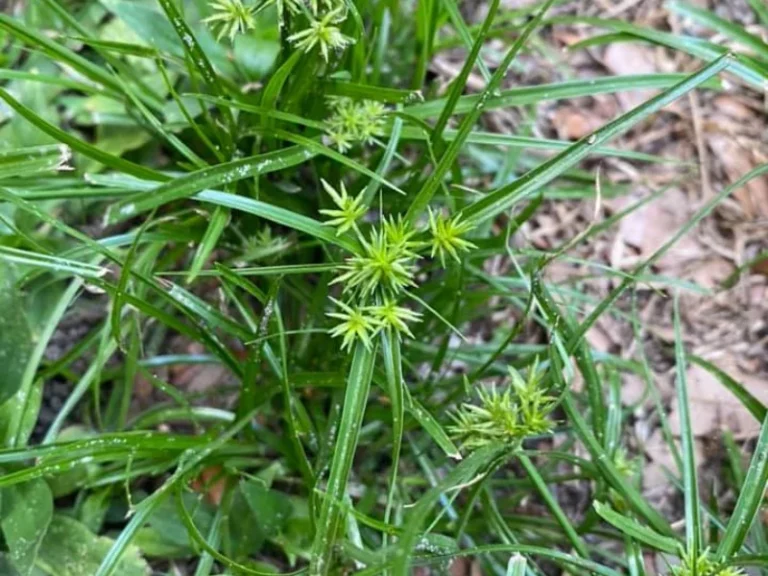How to Kill Nutsedge in Bermuda Grass
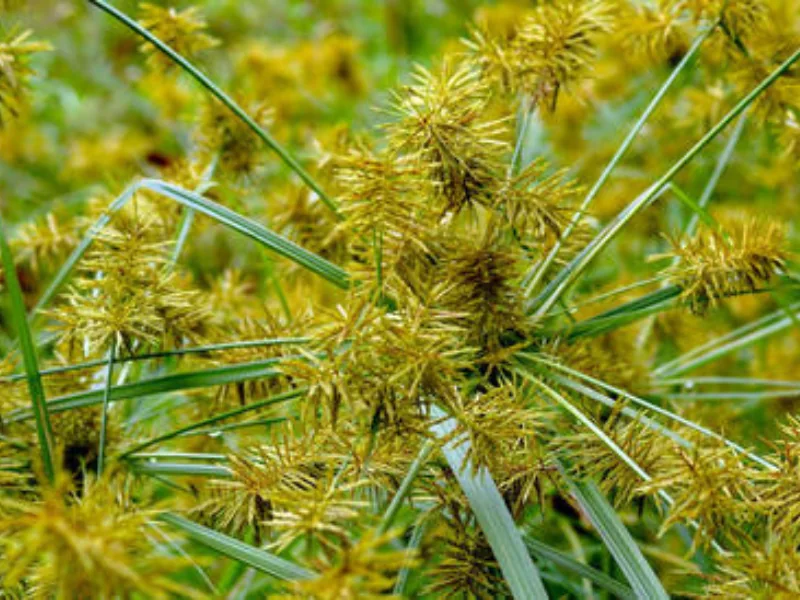
Nutsedge is a pesky and unsightly weed that often infiltrates Bermuda grass lawns, causing frustration for many lawn owners. This weed will quickly outgrow the normal appearance of your magnificent Bermuda grass and create an uneven appearance on an otherwise well-kept lawn.
Controlling nutsedge can be challenging and requires a strategic approach that will effectively kill nutgrass without harming your precious Bermuda grass lawn. Therefore, it is ideal to consider choosing a control method that specifically targets this tough weed.

How to kill nutsedge in a bermudagrass lawn
Nutsedge is a tough opponent due to its underground tubers, which can regenerate even after mowing or pulling the visible foliage. Fortunately, various selective herbicides are available in the market that specifically targets nutsedge without harming your Bermuda grass. Apart from herbicides, you can also kill nutsedge naturally.
Here are the 6 best nutsedge weed killers (herbicides) that can be used safely in a bermudagrass lawn:
- Image® kills Nutsedge Concentrate
- Ortho® Nutsedge Killer Ready-To-Spray
- Sedgehammer herbicide
- Bonide Sedge Ender
- Certainty
- Blindside Herbicide WDG FMC
1. Image® kills Nutsedge Concentrate
Image kills nutsedge concentrate is one of the best post-emergent selective weed killer for nutsedge in Bermuda grass lawns. It kills yellow and purple nutsedge, crabgrass, dollar weed, white clover, sandspur, ryegrass, poa annua, and wild onion or wild garlic.
The active ingredient in Image is Quinoline carboxylic acid or quinclorac, a widely used herbicide for controlling weeds in lawns, in this case, nutsedge. When appropriately applied, quinclorac will effectively inhibit nutsedge growth.
Acting as a selective herbicide, quinclorac disrupts the normal growth of nutsedge by hindering its ability to carry out photosynthesis and generate energy. It will specifically target the broadleaf weed while not harming Bermuda grass.
Here is how to use Image to kill nutgrass:
- Wear protective clothing.
- Mix five tablespoons of Image herbicide in 1 gallon of water and an ounce of surfactant. This quantity will be able to cover 1000 sq feet of land.
- Place the mixture in a spray bottle or a spray pump and shake well.
- Then directly spray the infested areas with the herbicides uniformly. Don’t spray a single spot more than thrice.
- Allow the sprayed area to dry for about 3 hours before irrigating to allow time for the product.
I used Image on my lawn and started seeing results in about two weeks when the nutsedge began to turn yellow. The nutsedge leaves started drying out one by one. Then after about five weeks, all the nutsedge that had grown in the area died.
Image application will inhibit nutsedge growth, allowing Bermuda grass to thrive and outcompete the broadleaf weed. Additionally, since nutsedge is a perennial weed, the image application will effectively eliminate the weed throughout the growing season.
If the first application doesn’t work, you can do a second one after two months.

2. Ortho® Nutsedge Killer Ready-To-Spray
Ortho is another easy-to-use powerful herbicide that can kill nutsedge in your Bermuda grass lawn. The product comes in a ready-to-spray form. You won’t require special equipment or mixing to use it against nutsedge.
Sulfentrazone 0.05% is the active ingredient in Ortho nutsedge killer. The substance can kill purple and yellow nutsedge, kyllinga, plantain, clover, spurge, knotweed, wild onion, woodsorrel, wild garlic, and chickweed. It is also safe to use it in warm-season grasses such as carpetgrass, bahiagrass, buffalograss, and centipedegrass.
Here is how you can use Ortho to kill nutsedge in your Bermuda grass lawn:
- Wear protective clothing.
- Add about ⅓ of an ounce of surfactant into the bottle to improve the product’s effectiveness. (Adding the surfactant is optional)
- Attach the gardening hose to the bottle, then open the water tap.
- Slide the tab on the bottle’s end to the ON position and spray.
- If you managed to locate single nutsedges, spray at least two pumps on each centre. However, if it is a large infested area, Hold the sprayer nozzle close to the nutsedge plants and spray until thoroughly wet but not to the point of stagnation.
You should see the first signs of distress in the nutsedge plants within 48 hours after application. The nutsedge leaves will have already started to turn brown.
Ultimately, it may take one and a half to two weeks to witness the complete elimination of nutsedge.
A good thing about Ortho is that it’s both a post and a pre-emergent herbicide. It not only kills the nutsedge but also prevents them from growing in the next growing season.
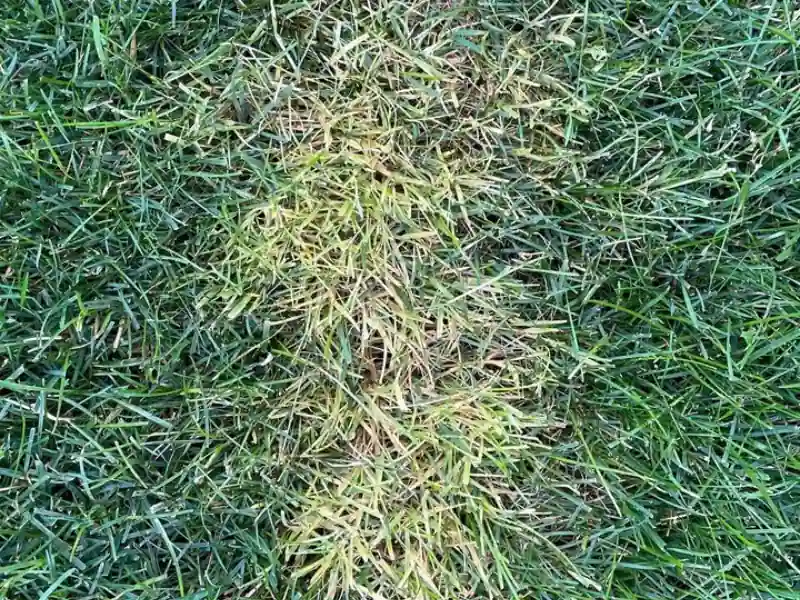
3. Sedgehammer herbicide
One of the advantages of using sedgehammer+ herbicide is that it comes with a surfactant already in it. Which means you won’t have to add any to the mixture. Sedgehammer has also successfully eliminated other weeds like pigweed, mustard, pokeweed, morning glory weed, purslane, and fleabane.
This nutsedge killer contains halosulfuron-methyl as the active ingredient, which targets the acetolactate synthase enzyme in nutsedge roots and shoots and eventually stops cell division in those areas.
Here is how you can use sedgehammer herbicide to kill nutsedge:
- Wear protective clothing.
- Read the guidelines on the product and mix the whole packet with 1 gallon of water.
- Then add about ⅓ of an ounce of nanotek surfactant to the mixture.
- Pour the resulting mixture into a spray bottle or pump, close the top tightly, and shake the mixture well.
- Then walk around the infested area while spraying the mixture to wet the nutsedge weeds thoroughly.
In about two weeks, you’ll be able to see some wilted and already yellowed nutsedge leaves. This is a sign that the herbicide affects the nutsedge. Your Bermuda grass will still be in good condition.
Then, you’ll see some brown patches of dead nutsedge weeds after one month.

4. Bonide Sedge Ender
Bonide Sedge Ender post and pre-emergent herbicide has also proven to kill nutgrass and 46 other different broadleaf and grassy weeds, including purslane, clover, dandelion, foxtail, goosegrass, crabgrass, chickweed, thistle, and others.
The product is available in two varieties:
- Sedge Ender- This comes in a ready-to-spray form, where you must attach your gardening hose to it and then start spraying. No mixing is required.
- Sedge Ender Concentrate- For this, you will have to do some mixing to use it.
Sulfentrazone, the active ingredient in Bonide Sedge Ender, adheres to nutsedge leaves and penetrates the soil, destroying shoots and roots. This effectively kills the weed and prevents regrowth, providing a long-lasting control method.
Here is how you can use Bonide Sedge Ender against nutgrass:
- Wear gloves and protective clothing.
- For the Sedge Ender Concentrate package, mix 5.5 ounces of with 2 gallons of water. Then use the 2 gallons of the mixture to spray on 1000 sq feet of spray area.
- For the Sedge Ender package, attach it to the garden hose and walk around the lawn spraying the herbicide.
Bonide Sedge Ender begins to work on the nutsedge on contact. Then after 48 hours, the nutsedge will have already started to brown out.
Pro tip: Mow about two days before and after making the application. Then make the application in the cooler times of the day, early morning or later evening. Before the herbicide dries, keep pets and kids away from the sprayed grass.
5. Certainty
Certainty is another strong product that can safely kill nutsedge in your bermudagrass lawn. You will only require a small amount to spray a wide area. Although expensive, it is economical since you will use it to control nutsedge for many growing seasons.
Certainty has 75% WT Sulfosulfuron as its active ingredient, which is effective in controlling both purple and yellow nutsedge, Kyllina, annual sedges, and broadleaf weeds such as chickweed, dandelions, white clover, bedstraw, and ground ivy.

Here is how to use it:
- Take four small scoops of the product and combine them with a gallon of water in a container. Add ⅓ of an ounce of a nonionic surfactant to enhance the effectiveness of the herbicide.
- Pour the mixture into a spraying pump and shake it well to ensure proper mixing of the product with the water and surfactant.
- Put on protective clothing, including gloves, long sleeves, and goggles, to minimize exposure to the product.
- Start spraying the mixture, keeping the nozzle spray close to the ground. Ensure that you saturate the target ground slightly and evenly.
- Let the sprayed area dry for approximately 3 hours to allow the herbicide to adhere to the weed and begin its action.
From my application, the nutsedge leaves began to brown within two weeks and ceased growing beyond the grass level. After a month, all nutsedge had completely browned out and died.
Apart from Bermuda grass, certainty can also be used on perennial ryegrass, tall fescue, St. Augustinegrass, Seashore paspalum, Centipedegrass, Buffalograss, Kikuyugrass, Zoysiagrass and Bahiagrass.
6. Blindside Herbicide WDG FMC
Blindside Herbicide WDG, developed by FMC Corporation, is an effective herbicide for killing nutsedge and not harming your Bermuda grass lawn. It contains the active ingredients Metsulfuron and Sulfentrazone, which attack the nutsedge’s leaves and roots.
Here is how you can use blindside herbicide against nutsedge in your Bermuda grass lawn:
- Fill your spray tank halfway with water.
- Then add once table spoon Blindside Herbicide. Fill the tank with water completely up to the 1-gallon mark and shake it well.
- When spraying, wet the target weeds but not so much. To apply it correctly, keep the nozzle close to the weeds and spray directly with one or two pumps.
Pro tip: Blindside Herbicide can be used with surfactants but may cause temporary discoloration in your Bermuda grass lawn. If you use a surfactant, apply the herbicide when the temperature and humidity are low to prevent the risk of discoloring your lawn.
Based on my experience with Blindside Herbicide, nutsedge took 10-14 days for the target weed to fully perish. However, you’ll often see noticeable yellowing of nutsedge within just a few days.
CAUTION: Although Tenacity can eliminate yellow nutsedge, it is not recommended for use on Bermuda grass lawns as it can potentially damage the lawn.
How to prevent nutsedge in Bermuda turfs
Here are some effective strategies to keep nutsedge at bay:
- Proper water management: Avoid overwatering your lawn, as excessive moisture creates favorable conditions for nutsedge growth. Ensure proper drainage and avoid water accumulation in low-lying areas or swampy spots in your lawn, as these are ideal environments for nutsedge to thrive.
- Pre-emergent herbicides: Plan and apply pre-emergent herbicides a few seasons before growing Bermuda grass. These herbicides create a barrier in the soil, preventing nutsedge seeds from germinating and growing in your lawn.
- Minimize soil disturbance: Nutsedge easily propagates through its underground tubers and rhizomes. Therefore, avoid hand-pulling or tilling in areas where nutsedge is or was present, as this can break the tubers apart and promote the growth of new plants.
- Regular mowing and maintenance: Keep your Bermuda grass at the recommended height and mow it regularly. Maintaining a healthy and dense turf helps suppress the growth of nutsedge and other weeds, reducing their ability to compete for resources.
- Manual removal: If you spot young individual nutsedge plants in your Bermuda grass lawn, carefully remove them using a hand tool, ensuring to remove the entire plant, including the underground tubers. Then dispose of the plants properly to prevent them from growing elsewhere.
FAQ
1. Will Bermudagrass choke out nustedge?
Bermudagrass can choke out nutsedge, but it will require consistent lawn care practices to grow densely and healthily. The dense growth of healthy bermudagrass will be able to suppress and reduce nutsedge presence in your lawn.
2. Can you pull up nutsedge in a Bermudagrass lawn?
Pulling up nutsedge on a Bermudagrass lawn is not recommended since it encourages the spread and development of new nutgrass weed. Nutsedge has underground tubers and rhizomes that can break out from the main root while being pulled up and remaining in the soil, resulting in several new plants growing from a single nutsedge.
3. Is Sedgehammer safe on Bermuda grass?
Yes, Sedgehammer is safe to use on Bermuda grass when applied according to the manufacturer’s instructions. It is a selective herbicide that is designed specifically to target and control sedges such as nutsedge while causing barely any sort of harm to Bermuda grass.
4. Is Tenacity safe on Bermuda grass?
Using Tenacity to kill nutsedge on Bermuda grass is not safe since the herbicide’s active ingredient, Mesotrione, can harm or kill the Bermuda grass on the lawn.

